Eriogonum umbellatum is found widely across the western states of AZ, CA, CO, ID, MT, NV, OR, UT, WA, WY, and Canada in BC and AB. With over thirty widely spread varieties, it is also one of the most diverse of the Genus. Found from the high alpine ridges down to the high desert basin environments.
The flowers are held erect in umbellate Inflorescence, ranging in colors form white to yellow to red. (yellows being the most often encountered). The flower stems normally display a whorl of bracts mid way up their length but not in all varieties. The leaves can be any thing from tomentose to glabrous, normally oblong-oval in shape, green to gray green in color adaxially depending on the density of floccose hairs present. Abaxially the surface is normally tomentose, white/gray to gray/green in color.
http://www.efloras.org/florataxon.aspx?flora_id=1&taxon_id=250060536
http://plants.usda.gov/java/profile?symbol=ERUM
There are many garden worthy varieties from low mat forming miniatures to sizable spreading shrubs. Some of the more well known are var. porteri, var. polyanthum, var. humistratum, var. aureum, var. proliferum and the selection 'Alturas Red'.
The variety encountered along the Sierra Nevada crest of CA and Siskiyou Mountains of OR eastward through NV, into southwestern, UT and northwestern,AZ is Eriogonum umbellatum var. nevadense. It is found at elevations ranging from 8000'> in the Great Basin Desert region. This grows as a mounding shrub 12-18" tall and 12"-24" across with bright yellow flowers and gray/green foliage.
Around the Reno area we often see var. nevadense expressed in two forms. The lower elevation form slightly taller with greener leaves and a more open airy inflorescence, And a higher elevation form, noticeable shorter, with grayer leaves and denser, lighter colored inflorescence. I had always thought that they were differant varieties however Dr. Reveal identified both forms as var. nevadense. In cultivation both forms keep their natural growth habits. I had the good fortune to test this, for several years, as I planted one of each form right next to each other in the garden.
http://www.calflora.org/cgi-bin/species_query.cgi?where-calrecnum=3398
http://plants.usda.gov/java/nameSearch?mode=symbol&keywordquery=ERUMN
The first three photos show the lower elevation form . The last three show the high elevation forum.
Comments
Re: Eriogonum umbellatum
The ones that I've tried here in the northeast are Eriogonum umb. v porteri and E. umb. v. humistratum. Both seem to last a long time in the garden. I've found that E. umb. v. humistratum took longer to bloom, but once it started it bloomed reliably every year. E. umb. v. porteri has the added bonus of wonderful color changes, both of bloom and of foliage. E. umb. v. humistratum has beautiful foliage without color changes.

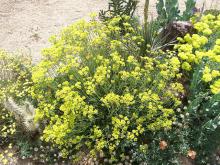
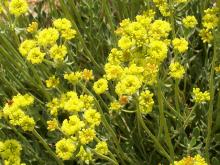
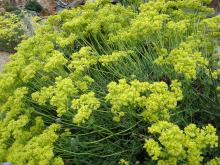
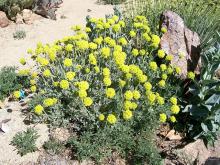
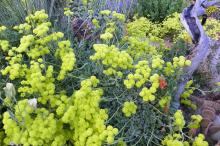
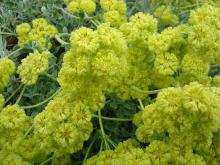
They all seem to be highly gardenworthy!